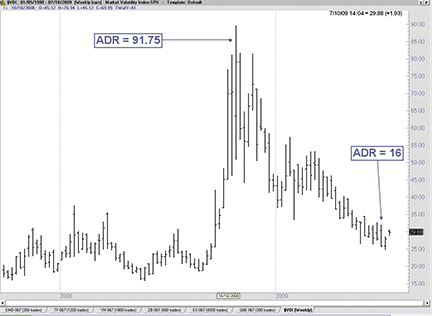DAYTRADING
A Surprisingly Simple Solution
Daytrading With Volatility
This trading strategy lets you take advantage of volatility to establish your profit targets and stop-losses.
The term “volatility” is typically associated with losses. It’s easy for media and money managers to blame losses on volatile market conditions, but is that really the case? Higher volatility can mean greater risk, but greater risk is a direct result of greater price fluctuations in the market. Greater price fluctuations might be a concern for investors, but active traders need markets to move, and these price fluctuations are a necessary component for successful daytrading. So is volatility really that bad? Could you accommodate periods of greater volatility and lower volatility, and actually use volatility to your advantage with the markets you trade? Yes, you can!
Defining volatility
Simply, volatility is the degree of uncertainty, and it is the potential for price changes in a given market. It can be defined in various ways, but the Cboe Volatility Index (Vix) is a great gauge of volatility in the US markets. Vix measures volatility on the Standard & Poor’s 500, based on 30-day option premium. When option premiums are high, traders expect future volatility to be high, and Vix rises. When option premiums are low, traders expect future volatility to be low, and Vix drops.

Figure 1: weekly $VIX chart. Over the last year, volume has increased and decreased, making some strategies difficult to trade. Note the difference between profit targets and stop-losses from October 2008 to June 2009.
Vix might be a great way to gauge volatility in the US markets, but how can you identify and track volatility in the individual markets you trade? This can be accomplished by tracking the actual ranges that a security or market has traded in a given period of time. This can be examined in a few ways.